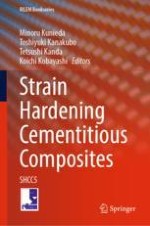2023 | OriginalPaper | Chapter
Comparison Between Experimentally Determined and Theoretical Fiber Orientation Distribution in Strain Hardening Cementitious Composites (SHCC)
Authors : Zhenghao Li, Christopher K. Y. Leung
Published in: Strain Hardening Cementitious Composites
Publisher: Springer International Publishing
Activate our intelligent search to find suitable subject content or patents.
Select sections of text to find matching patents with Artificial Intelligence. powered by
Select sections of text to find additional relevant content using AI-assisted search. powered by
